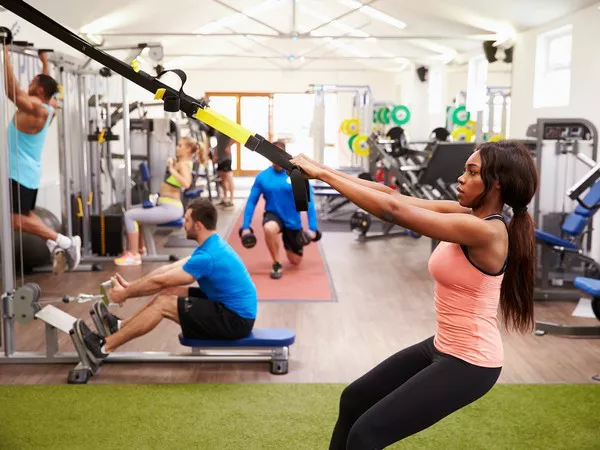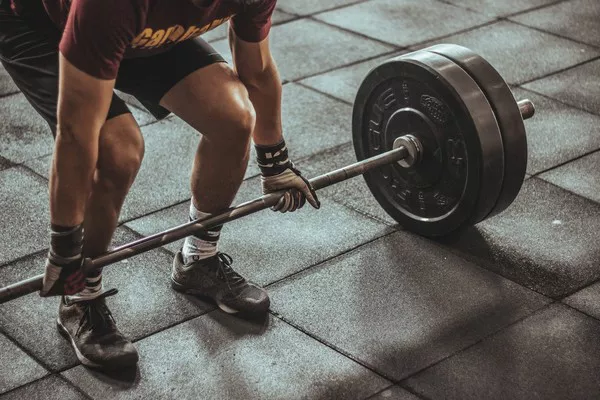Strength training is often overlooked by many 5K runners, but it can be the secret weapon that takes your performance to the next level. In this article, we will delve into the world of strength training for 5K runners, exploring why it is crucial and which exercises and routines can help you become a stronger and faster athlete. Whether you’re a seasoned runner or just starting your 5K journey, incorporating strength training into your routine can make a significant difference in your race times and overall endurance.
The Importance of Strength Training for 5K Runners
When people think of 5K races, they often picture runners with lean, wiry frames. While endurance and cardiovascular fitness are undoubtedly essential for 5K success, strength training plays a pivotal role in improving performance and preventing injuries.
Why Strength Training Matters
Enhancing Muscular Endurance: Strength training helps build the muscular endurance necessary for maintaining good running form and pace throughout a 5K race. A strong core, legs, and upper body can help you maintain proper posture and prevent muscle fatigue.
Injury Prevention: Incorporating strength training into your routine can reduce the risk of common running injuries like shin splints, IT band syndrome, and stress fractures. Strong muscles and joints provide better support and stability during your runs.
Increased Speed: Building muscle strength can improve your sprinting ability during a race’s final stretch. A strong finish can be the difference between a personal best and a missed opportunity.
Improved Running Economy: Strength training can lead to more efficient running mechanics, helping you use less energy at a given pace. This increased running economy can translate into faster race times.
Types of Strength Training for 5K Runners
Now that we’ve established the importance of strength training for 5K runners, let’s explore the various types of strength training exercises and routines that can benefit you.
Bodyweight Exercises
Bodyweight exercises are a fantastic way to begin your strength training journey. They require little to no equipment and can be done anywhere.
Push-Ups: Push-ups strengthen the chest, shoulders, and triceps, helping you maintain proper arm posture while running.
Squats: Squats target the quadriceps, hamstrings, and glutes, which are essential muscles for running power and stability.
Planks: Planks are excellent for core strength, helping you maintain a stable upper body and preventing excessive side-to-side movement while running.
Lunges: Lunges work on leg strength, balance, and coordination, all of which are crucial for 5K runners.
Weighted Strength Training
Once you’ve built a solid foundation with bodyweight exercises, consider incorporating weighted strength training into your routine. This involves using dumbbells, barbells, or resistance bands to add resistance to your workouts.
Deadlifts: Deadlifts are a full-body exercise that strengthens the back, glutes, and hamstrings, making them an excellent choice for 5K runners looking to develop power.
Squats with Weights: Adding weights to your squats can intensify the workout and help you build more leg strength.
Bent-Over Rows: This exercise targets the upper back and shoulders, improving posture and arm stability during running.
Russian Twists: Russian twists with a weighted medicine ball are great for strengthening the core and oblique muscles, aiding in rotational stability while running.
Plyometric Exercises
Plyometric exercises are dynamic movements that focus on explosive power and coordination. They are particularly beneficial for improving running economy and speed.
Box Jumps: Box jumps enhance lower body explosiveness, helping you generate more power with each stride.
Burpees: Burpees combine strength and cardio, providing a full-body workout that improves overall fitness and stamina.
Jumping Lunges: This plyometric variation of lunges enhances leg power and coordination, essential for maintaining a consistent pace in a 5K race.
Medicine Ball Throws: Medicine ball throws can help improve upper body power, which contributes to a stronger arm drive during running.
Periodization and Progression
When incorporating strength training into your 5K running routine, it’s crucial to follow a structured plan that includes periodization and progression. Periodization involves dividing your training into different phases, each with specific goals and intensity levels. Progression means gradually increasing the intensity or weight of your exercises as you become stronger.
Periodization Phases
Foundation Phase: Focus on building a solid base of strength with bodyweight exercises and lighter weights.
Strength Phase: Increase the weight and intensity of your workouts, aiming to improve overall strength.
Power Phase: Incorporate plyometric exercises to enhance explosive power and speed.
Tapering Phase: Reduce the intensity of strength training as you approach your race day to ensure you’re well-rested and ready to perform your best.
Progression Tips
Gradually Increase Weight: Add weight or resistance gradually to avoid overtraining and injury.
Monitor Your Form: Maintain proper form during exercises to maximize effectiveness and minimize the risk of injury.
Listen to Your Body: Pay attention to your body’s signals and adjust your training accordingly. Rest when needed to prevent overtraining.
Include Rest Days: Rest and recovery days are essential for muscle repair and growth.
Incorporating Strength Training into Your 5K Training Plan
Now that you understand the various types of strength training exercises and the importance of periodization and progression, it’s time to incorporate strength training into your 5K training plan.
Weekly Strength Training Schedule
Foundation Phase (2-3 times per week): Start with bodyweight exercises and focus on proper form and technique.
Strength Phase (2-3 times per week): Introduce weighted exercises and gradually increase the weight as you progress.
Power Phase (1-2 times per week): Include plyometric exercises to enhance power and explosiveness.
Tapering Phase (1-2 times per week): Reduce strength training intensity as you get closer to your race day.
Sample Weekly Training Schedule
Monday: Strength Training (Foundation Phase)
Tuesday: 5K Run (Moderate Pace)
Wednesday: Strength Training (Strength Phase)
Thursday: Rest or Light Cross-Training
Friday: Strength Training (Power Phase)
Saturday: Long Run (Increasing Distance)
Sunday: Rest or Active Recovery (Yoga or Stretching)
Remember that individual needs may vary, so it’s essential to tailor your strength training plan to your specific goals and fitness level. Additionally, consulting with a coach or trainer can provide valuable guidance and ensure you’re following a program that suits your needs.
Conclusion
Strength training is a vital component of a well-rounded 5K training plan. It can enhance your muscular endurance, prevent injuries, increase speed, and improve running economy. By incorporating a balanced mix of bodyweight exercises, weighted strength training, and plyometrics, along with proper periodization and progression, you can unlock your full potential as a 5K runner. So, lace up your running shoes and hit the gym—your next personal best is within reach with the right strength training regimen.
Strength Training. It’s not just a supplement to your 5K running routine; it’s the key to becoming a stronger, faster, and more resilient athlete. Don’t underestimate its power in helping you achieve your 5K goals.
[inline_related_posts title=”You Might Be Interested In” title_align=”left” style=”list” number=”6″ align=”none” ids=”2399,2596,2594″ by=”categories” orderby=”rand” order=”DESC” hide_thumb=”no” thumb_right=”no” views=”no” date=”yes” grid_columns=”2″ post_type=”” tax=””]


































